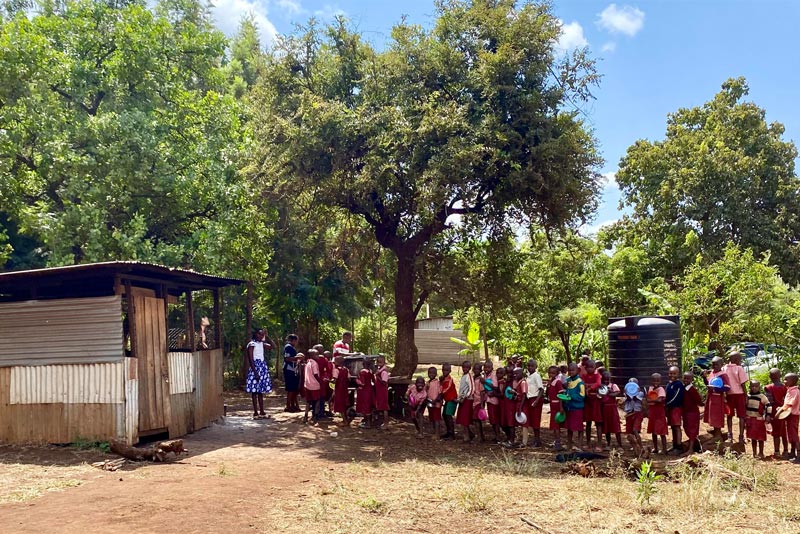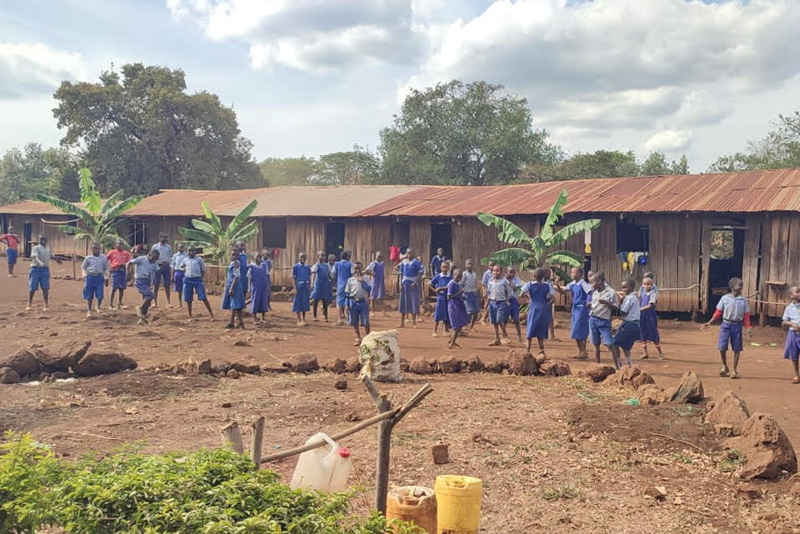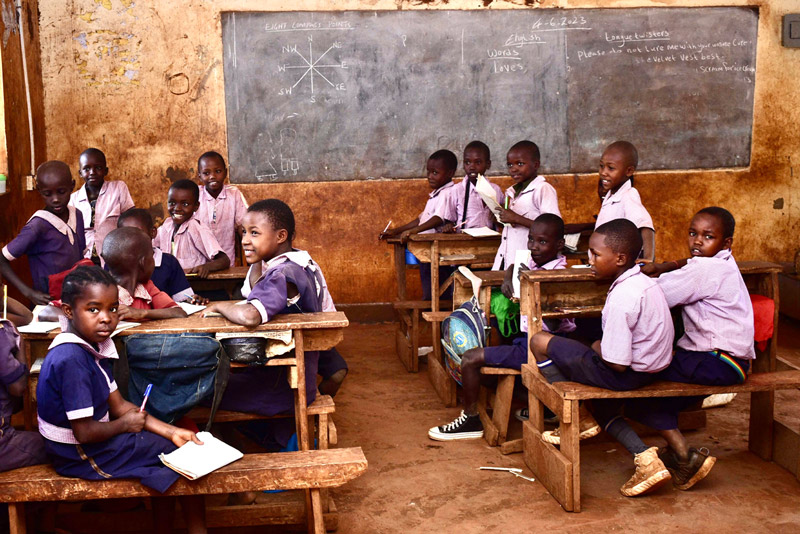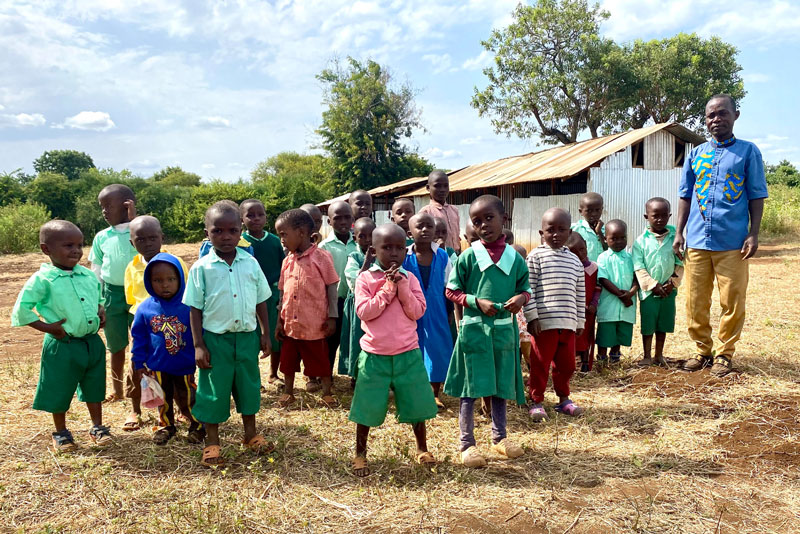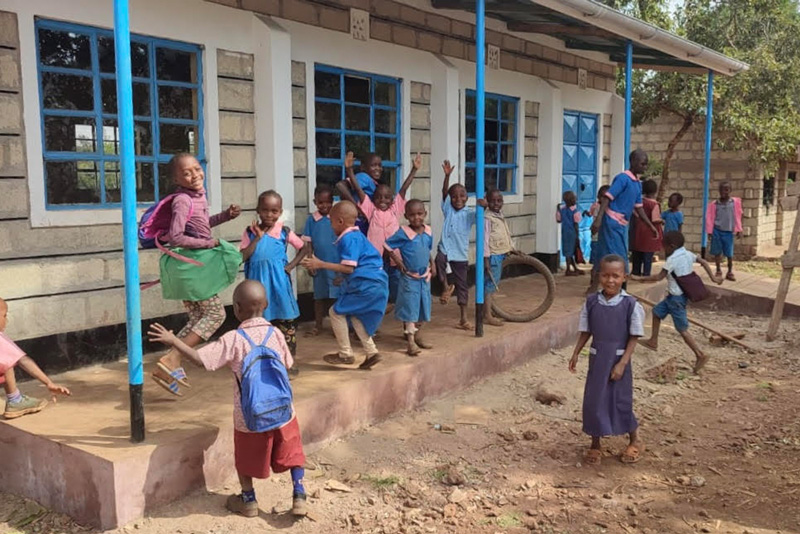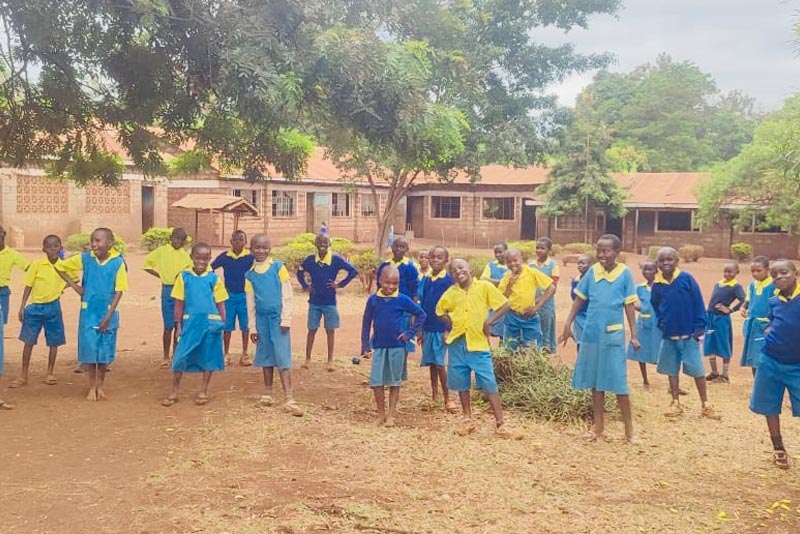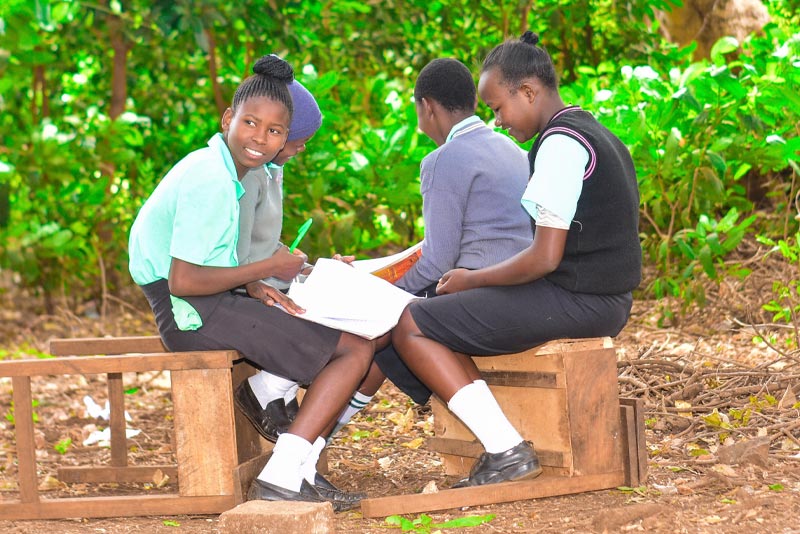Challenges
All schools in the area lack good infrastructure and resources with limited access to basic amenities. Children often miss valuable learning time collecting water causing fatigue due to the distances walked carrying heavy jerry cans. Without proper sanitation and toilet facilities, sickness is rife. Absences from school due to water borne diseases such as cholera, typhoid and dysentery are common. Schools lack permanent classrooms, staff rooms and toilets. The temporary iron sheet structures are unsafe and uncomfortable, and with no doors or windows, the extreme weather conditions enter. The dust in the dry season causing eye infections and respiratory problems in the pupils. Educational resources are few or non-existent with some schools in the area also struggling to provide lunch for the pupils resulting in pupils dropping out permanently or going home at lunchtime without returning.
In Kenya, the development of any public institution is the responsibility of both the Government and the benefiting community. Although the Government has continued to deploy teachers to the schools, it has not put any emphasis on the development of the school infrastructure. The parents, most of whom are below the poverty line for Kenya, are required to support the infrastructure development which puts further pressure on their finances, limiting their opportunities and preventing any advancement in their quality of life.
At THI, we work alongside 6 Primary Schools (one new addition in 2023) and the only Senior Secondary School in the area, helping them to develop their school’s infrastructure and improve their teaching and learning environment. We not only focus on the infrastructure and resources but also on the education of the educators to ensure that there is improved health and hygiene and subsequent pupil attendance.
In 2022, with the support of funders, Tony Kilduff, The Jordan Family Foundation and the McGinley Foundation, THI constructed one new permanent classroom in each of the 5 Primary Schools. This initiated the Government to add Junior Secondary status to each school in January of 2023, meaning that children could continue with their education close to home.
Aims
- To ensure that all 7 schools have enough permanent classrooms equipped with desks and chairs
- To construct gender specific toilet blocks in each school to improve health and hygiene and to increase female attendance
- To provide every school with an administration block to improve teaching practices
- To ensure that each school has adequate resources to deliver the curriculum
- To support schools in lobbying for Government support and ongoing subsidies
- To alleviate the financial burden placed on parents to develop the schools’ infrastructure and pay teacher salaries
